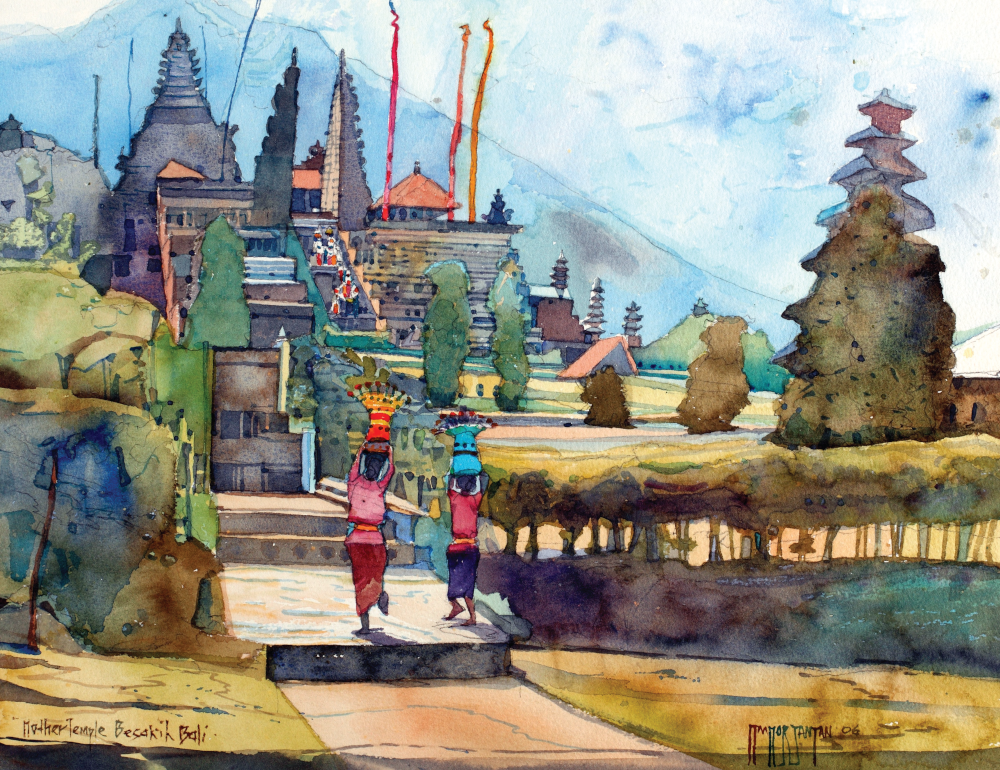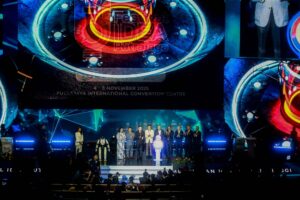KUALA LUMPUR, Sept 15 — When Dr Krishna Gopal Rampal retired from academia on August 31, 2025, after 43 years of teaching public health and occupational medicine, he closed one chapter of his life and revealed another that may outlast him.
The 74-year-old professor and his wife Kamla Devi have quietly built what is believed to be Asia’s — if not the world’s — largest collection of Hindu temple art: 414 artworks spanning paintings, sketches and photographs, produced by 16 artists from nine countries.
Known as the Sacred Structures Collection, it documents temples from Malaysia and Singapore to Cambodia, Myanmar, Vietnam, Indonesia, Thailand, and even England. It is a body of work unmatched in focus, scope and devotion.
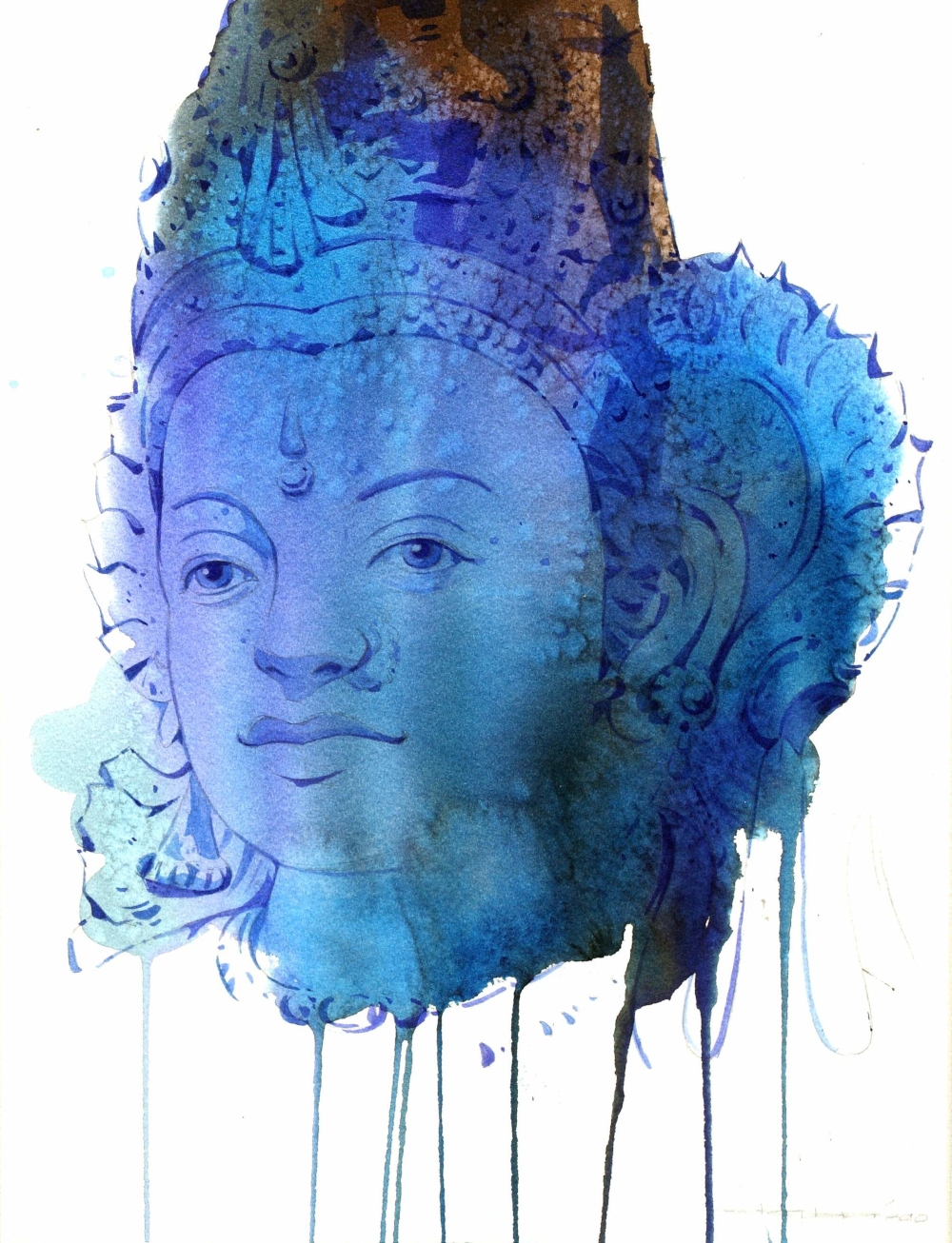
Stephen Menon’s Mahamariamman art from the Durga Amman Petaling Jaya temple. Done in 2010 in the watercolour on paper style. — Picture courtesy of Dr Krishna Gopal Rampal
Dr Krishna spent four decades teaching public health and occupational medicine, mostly at Universiti Kebangsaan Malaysia, where he began in 1982. Later, he served at Perdana University and Universiti Tunku Abdul Rahman before retiring this year.
“I’ve been a cikgu (teacher) all my life. I’m not a businessman, I’ve got no extra income, only my salary and my passion for art.”
From six temples to 414
Malay Mail met Dr Krishna at his home at 9.45am just as he was finishing his morning walk. His grandson was at home with his tutor, while the house pet, a fluffy white cat, meowed for attention.
As we entered, it was clear the home bore Dr Krishna’s blueprint. Large canvases leaned against every wall, while sculptures — particularly of Ganesha, the elephant-headed Hindu god known as the remover of obstacles — adorned the space.
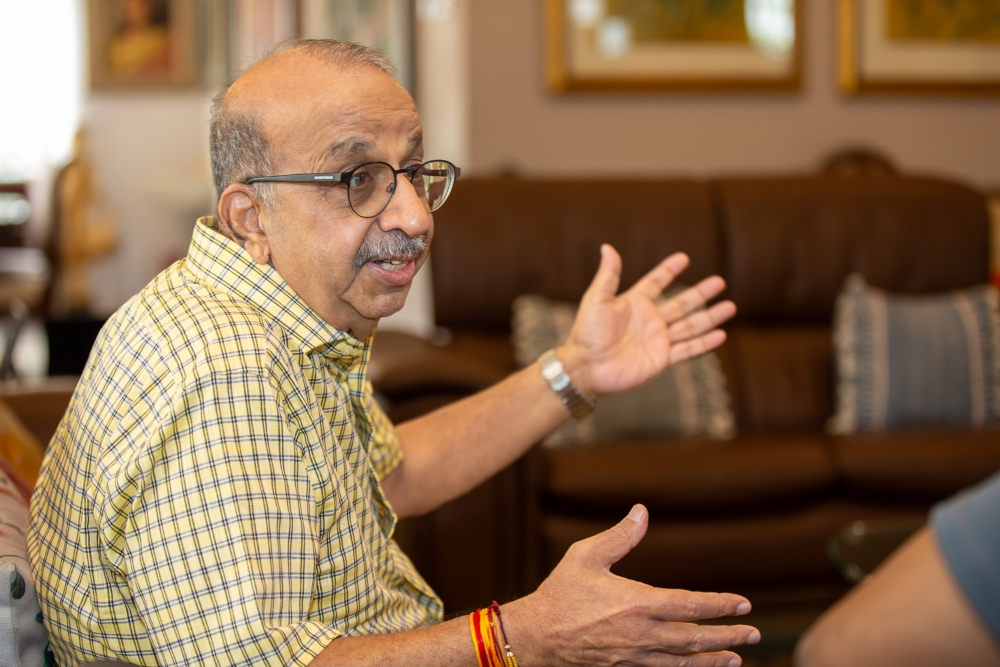
Dr Krishan Rampal is retired and ready to hand on his vast collection on Hindu Temple paintings and sketches to the right person. — Picture by Raymond Manuel
“I never thought it would become this big,” he said.
“At first, I just wanted to document six temples but it kept expanding, six temples became ten, then entire countries.”
His passion for temples is also tied to his personal faith. In 2000, he embarked on his first major pilgrimage, visiting the Char Dham — the four sacred Hindu pilgrimage sites of Dwarka, Rameshwaram, Badrinath, and Puri. That journey left a deep impression.
“After that, I thought, why not temples here in Malaysia? I realised I had never looked at them closely, even though they were all around me,” he recalls.
The idea for the art was born in 2004, when he discovered that almost no paintings of Hindu temples existed in Malaysia.
“Artists told me Indians don’t collect temple art, so they never painted them. That struck me. If nobody was going to do it, then I had to.”
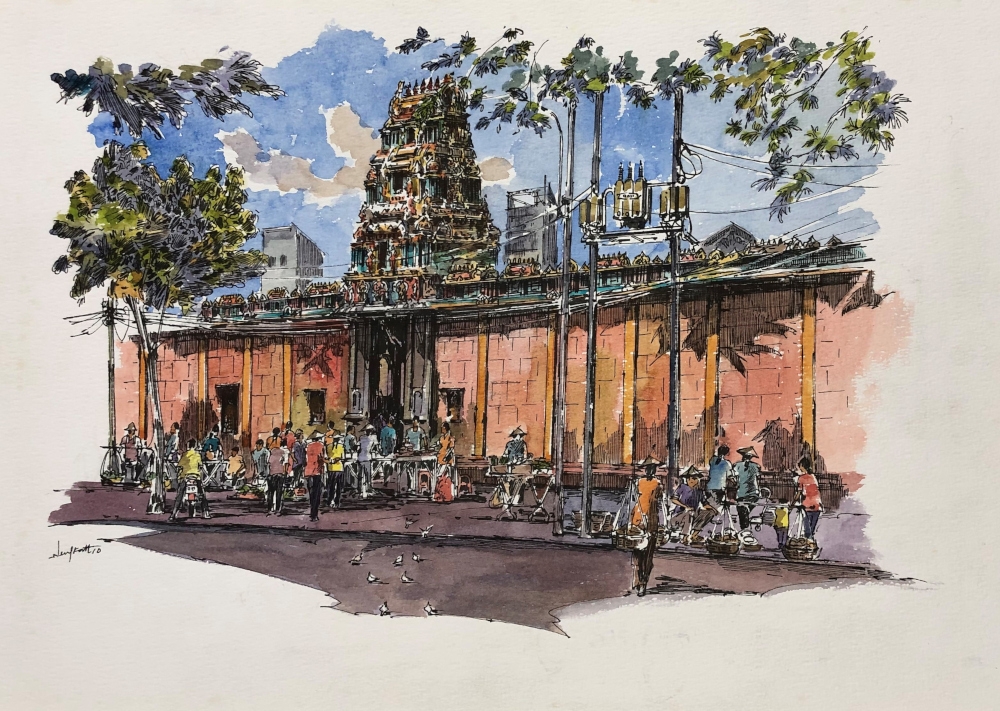
Lee Weng Fatt, watercolour on paper painting of the Mariamman Temple at Ho Chi Minh, Vietnam done in 2010. — Picture courtesy of Dr Krishna Gopal Rampal
He enlisted senior artists like the late Victor Chin and Long Thien Shih, later expanding to a circle of 16, which included Lee Weng Fatt, who alone painted more than 100 temples across Malaysia and Singapore, before travelling on to Cambodia and Myanmar.
Kamla was central to the project.
“She was the driver, literally. She would take the artists, drive them to Malacca, Singapore, even Bangkok. Without her, this collection would not exist,” he said.
To finance this ambitious project, he sold off early treasures in his art collection, including works by Malaysian masters Latiff Mohidin and others.
“Friends told me I was making a mistake but without that sacrifice, I would never have built the temple collection.”
The challenge of legacy
Over the years, Dr Krishna’s Sacred Structures Collection has been exhibited in major galleries, including the Penang State Art Gallery and the National Art Gallery, as well as universities. Most of the works now sit in climate-controlled storage — safe, but unseen.
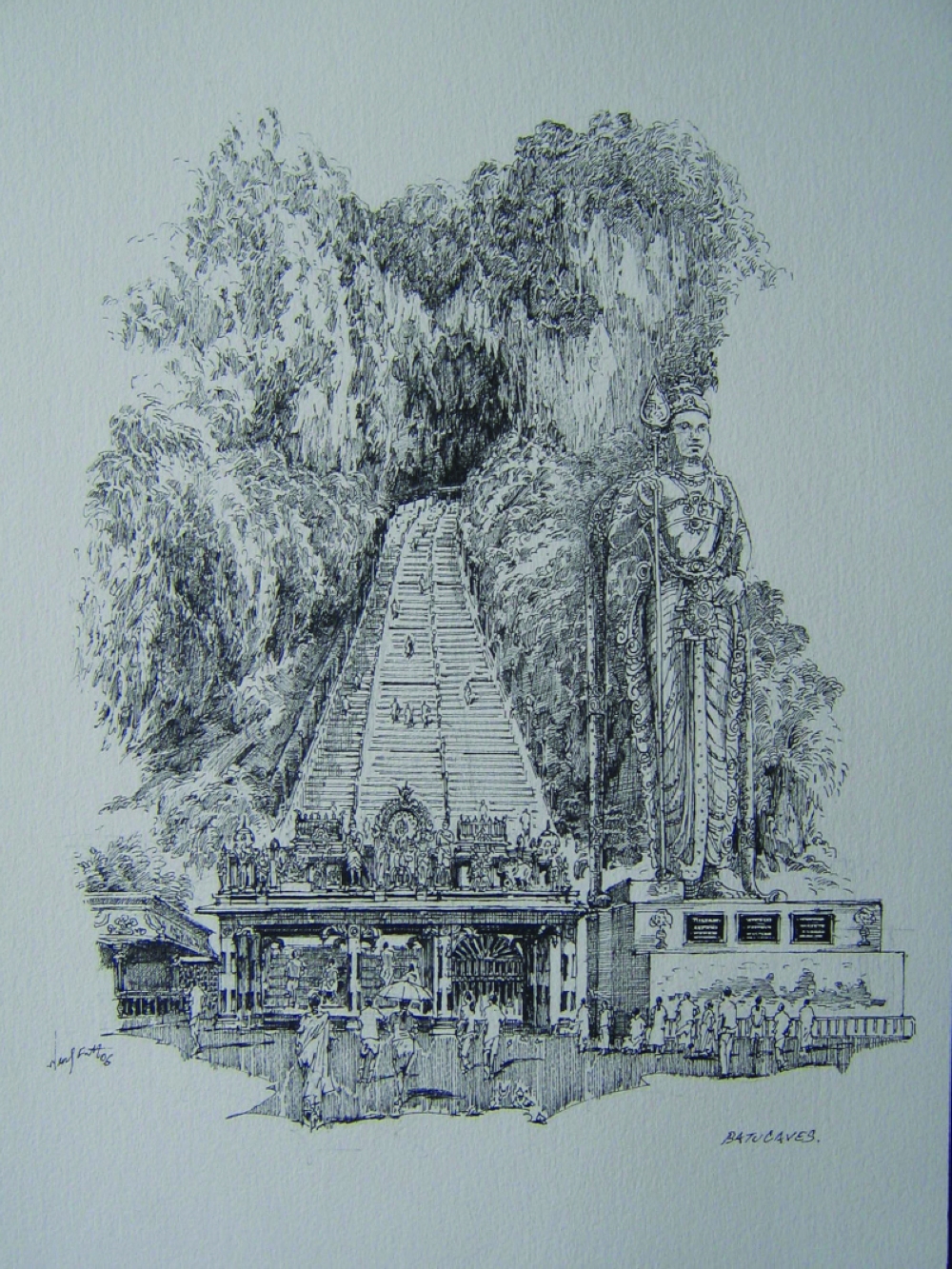
Lee Weng Fatt, Sri Subramania Swamy Devasthanam, Batu Caves done in 2006 in the pen and ink on paper style. — Picture courtesy of Dr Krishna Gopal Rampal
And that weighs heavily on him.
“I can’t manage this collection anymore. It’s too big for one person,” he admits.
“This kind of collection belongs in a public space. I’m looking for someone who loves Hindu temples, who loves art, and who has the resources to take it further. Not just to buy it, but to keep showing it.”
He said that displaying a collection comes with many costs — from staff and food to rent, utilities, and marketing — which makes it difficult to manage over long periods. On the other hand, he stressed that he is not in a hurry to sell.
“I’m not a marketer. I’ve been a teacher all my life, not a seller. The right person has to come along someone who values the art, not just the price.”
Despite the scale of his collection, Dr Krishna downplays his role compared to other wealthy collectors.
“Mine is a focused collection, thematic,” he says.
“Some people have bigger and better works, but my heart is in the Hindu temple scene.”
A journey worth sharing
When asked how much his collection is worth Dr Krishna said the real purpose has always been about joy, not investment.
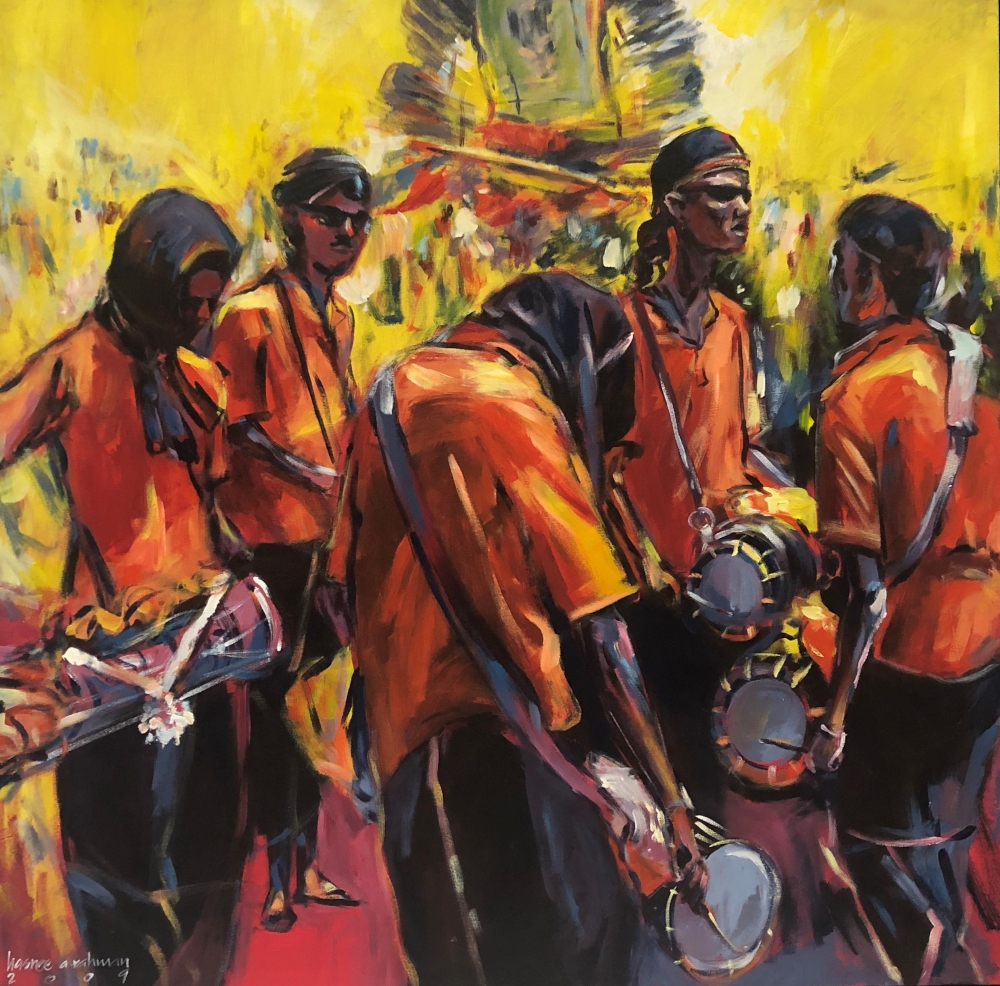
Hasnee Abdul Rahman’s oil on canvas painting of Thaipusam at Batu Caves. — Picture courtesy of Dr Krishna Gopal Rampal
“Too many Malaysians think art is only about money. But not all artworks go up in price. My advice, buy what you like, live with it, let it speak to you.
“In the beginning, I would suggest to somebody for one or two years, don’t even think of buying. Just go out and see the artworks. Enjoy looking at them. Then you’ll find some artist’s work you like, then you buy one, then two. That’s what happened to me.”
At 74, he continues his weekly ritual of “temple hopping” with Kamla, scouting sites, talking to artists, still dreaming of expanding the collection. He also urged folks to be curious about art and to check out Art Voice Gallery for those interested in local art and artists.
Despite owning over 400 works, a few remain closest to his heart.
Latiff Mohidin’s Gelombang, acquired in the early 1990s, still hangs in his home.
“A Filipino sculptor once told me, you don’t need to understand it, just enjoy it, like music. That changed the way I saw art.”
Zulkifli Yusoff’s Power Series, bursting with vivid colour and semi-abstract figures, speaks to him for its energy and symbolism.
Jeganathan’s Ganesha, a large canvas by the late artist, is among the few temple-themed works by an Indian painter in his collection.

R. Jeganathan’s Vishnu on Garuda from the Sri Perumal temple in Puchong. Done in 2006 in the pen and ink on paper style. — Picture courtesy of Dr Krishna Gopal Rampal
His collecting journey began with Chew Fang Chin’s painting of the Mulu Caves in 1991. More than 30 years later, his latest acquisition is by Lim Kim Hai, a still life of apples.
“Of course, my taste has changed over time but my biggest shift was the temple series. That’s where my heart lies.”
If you want to explore his collection, Dr Krishna has a website — hindutempleart.com — where you can learn more about the man behind the collection, the artists, and their works.
